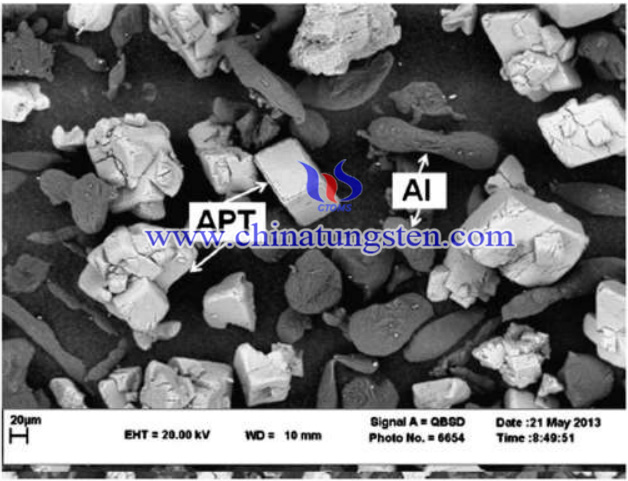W–A12O3 Nanoscale Composite Using Ammonium Paratungstate (APT) And Al Powder Mixture
- Details
- Category: Tungsten Information
- Published on Saturday, 19 September 2020 15:36
In recent years, nanometered-scale tungsten and its compounds have attracted much focus because of their superior physical and mechanical properties. A wide variety of methods such as mechanical alloying, combustion synthesis, physical vapor deposition (WD), electric wire explosion etc. have been used to synthesize nanostructured tungsten. Among these techniques, mechanical alloying and mechanochemical synthesis (CS) are very attractive. Simple and inexpensive equipments are required, and it can be conducted at ambient temperature. Indeed MCS uses mechanical energy to active chemical reactions.
A W–A12O3 nanoscale composite using ammonium paratungstate (APT) and aluminum (Al ) powder mixture as raw material has been reported. Al has been used as reducing agent, which has high amount of oxidation heat. According to authors' claim the process is a very attractive technique, and has potential commercial applications. It needs inexpensive procursor materials, and can be conducted under room temperature.

The preparation procedures are as follows:
Firstly, the ammonium paratungstate (APT, 99%), was mixed with Al (99.5%) to prepare the mixture powder.
In order to reduce the effect of surface oxidation, Al was used 10 wt.% more than stoichiometric. 5 g of powder mixture was milled in high energy planetary ball-mill for different milling times up to 24 h at room temperature. The rotation speed of mill was 300 rpm, and the weight ratio of the balls to the powder (BPR) was 40:1. The milling media was bearing steel balls with diameters of 10 and 12 mm.
The Clystal structures of the ball-milled powders were characterized by X-ray diffraction (XRD. The XRD patterns were recorded with 0.02a step size, and 1 s time per step in the 2B range of 10—800. The mean grain size of obtained powder was calculated from Scherrer method using the frill width at half maximum (FWHM) of the X-ray peaks. Morphology ofthe produced powders was studied by scanning electron microscopy (SEM) model VP 1450 equipped with energy dispersive spectrometry (EDS).
To sum up, W–A12O3 nanostructured composite has been successfully prepared via mechanochemical reduction of APT with Al mixture. Self-propagation reaction between AVE and Al took place after 25 min mechanical milling. The obtained composite was nanostructured and agglomerated with regular rounded shape. It requires inexpensive procursor materials, and can be conducted under room temperature.
- APT Manufacturer & Supplier, Chinatungsten Online: ammonium-paratungstate.com
- Tungsten News & Prices of China Tungsten Industry Association: www.ctia.com.cn
- Molybdenum News & Price: news.molybdenum.com.cn
- Tel.: 86 592 5129696; Fax: 86 592 5129797; Email: sales@chinatungsten.com



 sales@chinatungsten.com
sales@chinatungsten.com